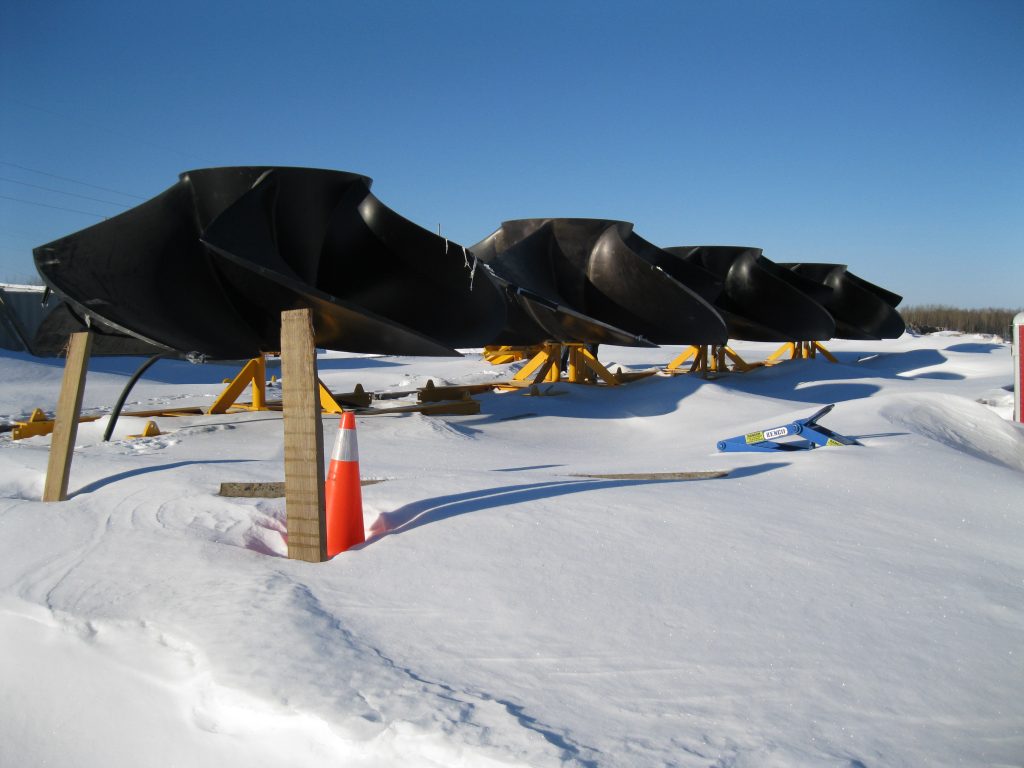The government of Ontario commissioned the Little Long hydropower plant in the late 1950s. Like all aging hydropower plants, the parts are starting to wear out and degrade performance. The Little Long plant will undergo a complete mechanical overhaul starting this year under the supervision of GE Renewable Energy. The upgrades will boost power by almost 10 percent and keep the plant running for another several decades.
Like Little Long, these days, the 800 hydroelectric plants in the U.S. and Canada are reaching a venerable age. They are on average 60 years old, and the vast majority have not yet been modernized. Meanwhile, hydro’s share of power generation in America has dwindled from 40 percent at its peak in the 1930s to roughly 7 percent today.
 Top: Parts of Canada rely heavily on hydro power — it's responsible for roughly 90 percent of the power in Quebec alone. But building new dams has become more difficult, which makes upgrading and maintaining plants all the more important. Image credit: Caio Coronel/Itaipu Binacional. Above: A hydropower turbine propeller with blades, called a “runner,” can crack and erode with age, which impedes performance. Images credit: GE Renewable Energy
Top: Parts of Canada rely heavily on hydro power — it's responsible for roughly 90 percent of the power in Quebec alone. But building new dams has become more difficult, which makes upgrading and maintaining plants all the more important. Image credit: Caio Coronel/Itaipu Binacional. Above: A hydropower turbine propeller with blades, called a “runner,” can crack and erode with age, which impedes performance. Images credit: GE Renewable EnergyPart of the reason is that building new dams can raise some concerns over the potential environmental impact on fish and wildlife or land irrigation. However, in California, when drought slowed hydro generation, the use of natural gas shot up from 45 percent to 60 percent, resulting in 33 percent more carbon emissions in the state.
Hydroelectricity is renewable, and it's cleaner and cheaper than coal or natural-gas generation. In the absence of grid-scale batteries, dams also can be used to store electricity generated by renewables.
No wonder there is a movement underway to make those old hydro plants more efficient and increase their capacity. Altogether, they produce 165 gigawatts of electricity. Quebec alone receives approximately 90 percent of its power from hydropower. “Hydro plants were designed for ‘set and forget,’ ” says Stephanie Judge, U.S. sales manager of business services for GE’s Hydro solutions. “The aging of the fleet today is a real problem. The good news is that it can be solved.”
Mechanical parts, for example, wear out after 50 or 60 years of continuous use. Over the decades, changes in the water flow lead to problems with the turbines, creating uneven wear patterns and preventing the turbines from working effectively. The propeller with blades, called a “runner,” can crack and erode as a result. All of this slows down performance.
The Little Long plant on the Mattagami River in Ontario is about to undergo its first significant upgrade since coming online in 1963. Like many other hydro plants, it’s remained virtually unchanged. Ontario Power Generation recently hired GE for a complete mechanical overhaul of Little Long’s two oldest turbines.
Over the next two years, GE will engineer and install new generators, which will cost less to operate. The comprehensive overhaul includes the replacement of the units’ switchgears and electrical components, as well as the supply and installation of a new head gate for one unit.
Currently, the capacity of each turbine generator is rated at 65.9 megawatts (MW). When the overhaul is complete, they will be able to generate about 72 MW each. The total power station will reach 219 MW.
“When we’re finished, the turbines will perform better, and they’ll have greater power and efficiency,” says Gilles Jutras, GE’s director of sales for hydro service in Canada.
Some of the plants GE is upgrading will be equipped with digital sensors to monitor factors like vibrations on the turbines to alert operators of potential maintenance issues. The digital sensors will tell the operator the condition of the unit, suggest an analysis of the situation and, ultimately, propose troubleshooting or actions to take based on the actual conditions. While not directly applicable here, these types of sensors are part of the company’s Digital Hydro Plant offering that provides plant operators with insights on plant performance relative to benchmark data and makes recommendations on how to improve production capacity, efficiency, and flexibility.
The updates will help extend the life of plants by up to 40 years, helping to keep hydro as an important part of the energy mix in North America.





